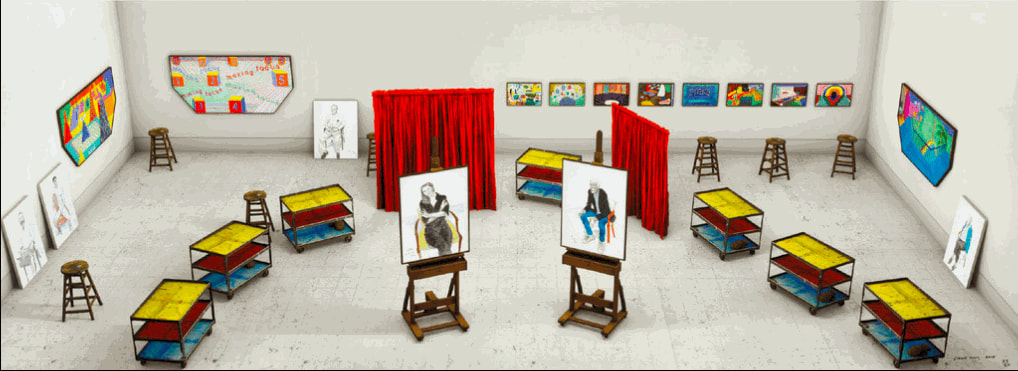
David Hockney
David Hockney’s experimentation with perspective spans decades, most notably perhaps in his photographic collages from the 1980s. He continues this exploration in what he calls “photographic drawings” like "Seven Trollies, Six and a Half Stools, Six Portraits, Eleven Paintings, and Two Curtains" – to create these works, hundreds of photographs are digitally assembled and merged into a single image. By placing these multiple “vanishing points” into one image, Hockney intends to create work that is even 'more real' than ordinary photography. Much like '3D photographs without the glasses', these works give the impression of being inside a room while staring at the flat plane of the piece. The artist's photographic drawings are a unique and innovative aspect of his artistic practice. Hockney developed this technique to capture the passage of time and movement in a static image. Hockney creates a sense of fragmented reality, allowing the viewer to perceive multiple viewpoints simultaneously. His photographic drawings are characterized by their vibrant colors, dynamic compositions, and a sense of spontaneity. He often used this technique to depict landscapes, portraits, and still-life subjects. The resulting images have a collage-like quality that blurs the line between photography and painting. These photographic drawings not only showcase Hockney's artistic innovation but also challenge traditional perspectives on photography and representation. They exemplify his continuous exploration of new ways to engage with visual storytelling and expand the boundaries of traditional art forms.